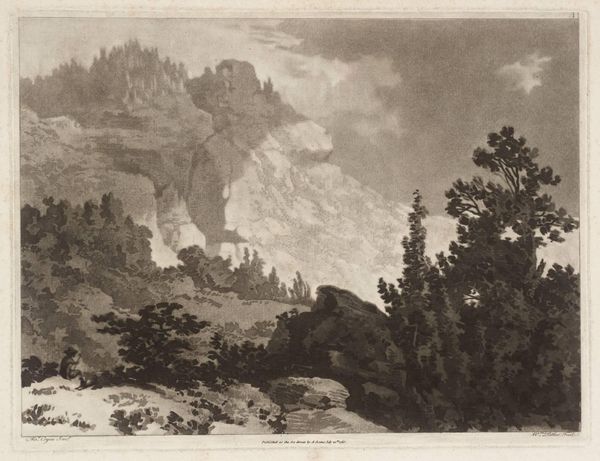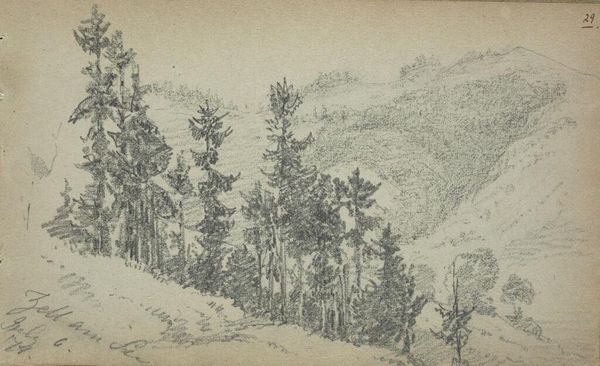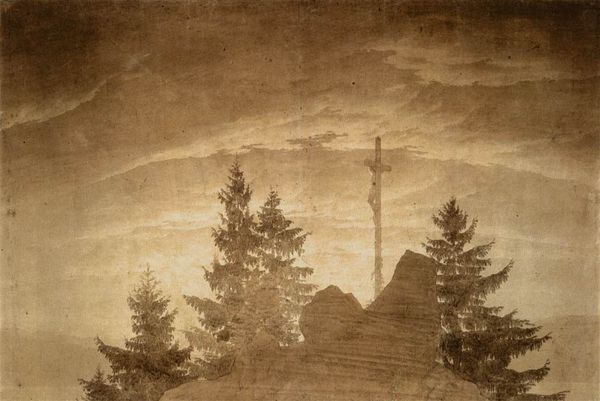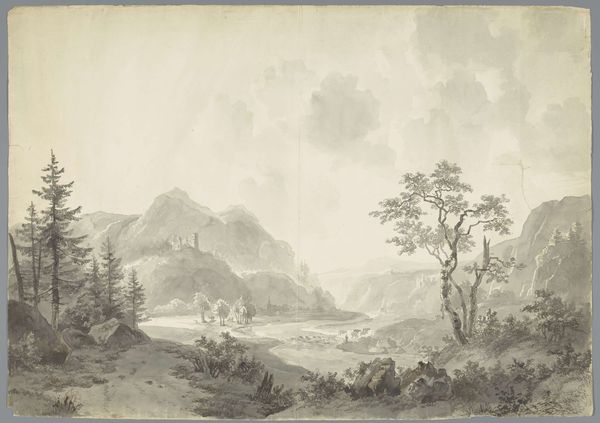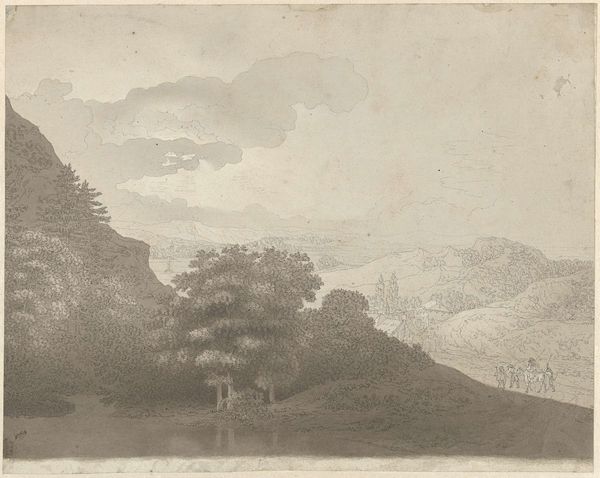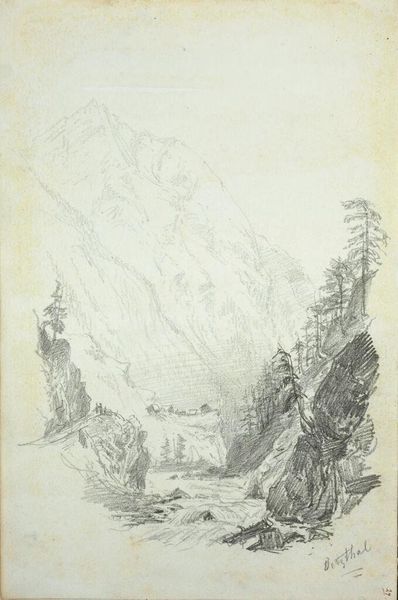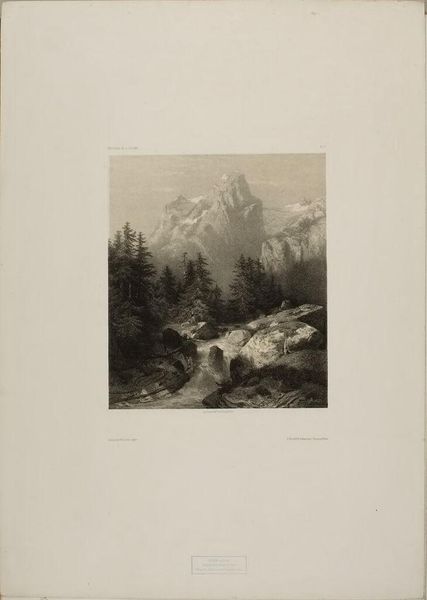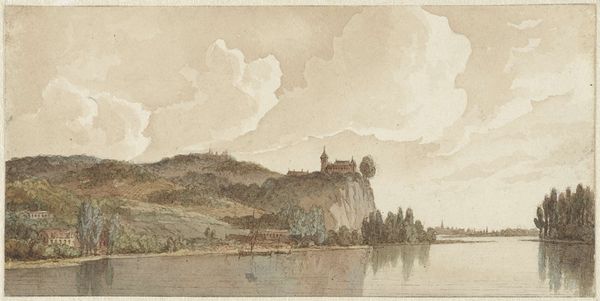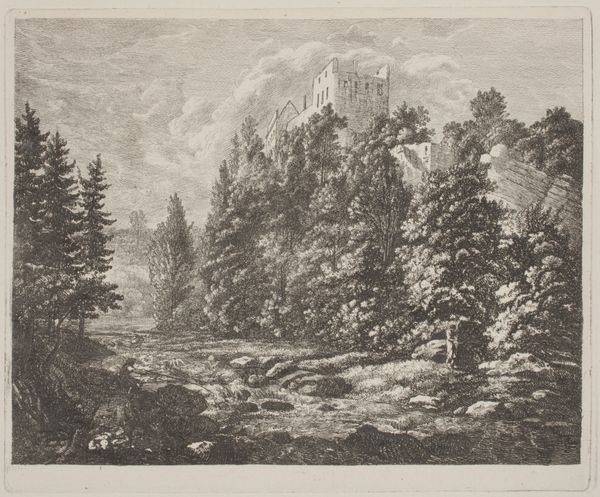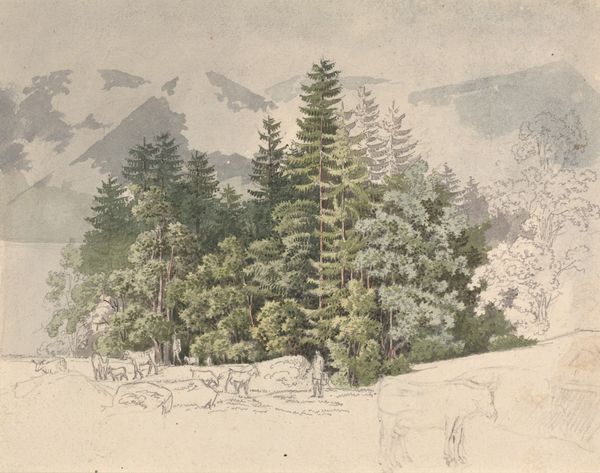
drawing, paper, ink
#
drawing
#
natural shape and form
#
landscape
#
classical-realism
#
charcoal drawing
#
figuration
#
paper
#
ink
#
romanticism
#
miniature
#
sublime
Copyright: Public domain
Caspar David Friedrich created this drawing of a statue of the Madonna in the mountains with pencil around 1814. In Friedrich’s time, the representation of landscape became a vehicle for expressing national and religious sentiment, as institutions like the church and the state sought ways to unify people after periods of conflict. Here, the statue of the Madonna is placed high atop a mountain peak, acting almost as a spiritual guardian of the land, and a symbol of hope. This image creates meaning through the use of Christian iconography and its association with German nationalism. Friedrich’s work often reflected the cultural and political climate of early 19th century Germany, specifically the search for cultural identity in the wake of the Napoleonic Wars. To understand art like this more fully, we can look to historical sources, such as political pamphlets, religious texts, and even travel guides. Understanding these contexts can reveal how art engages with and shapes the world around it.
Comments
No comments
Be the first to comment and join the conversation on the ultimate creative platform.
